Leveraging collaboration for sustained retention: Why is human-centric management back in the spotlight?
Published on July 30, 2025
Leveraging collaboration for sustained retention: Why is human-centric management back in the spotlight?
Against a backdrop of global talent shortages and rising turnover, retaining employees has become a major challenge for companies. The loss of talent not only leads to high financial costs, but also has a direct impact on business operations, through reduced operational efficiency and team commitment.
To optimize employee retention, companies need to put people back at the heart of their collaborative efforts. This means creating an innovative, high-performance work environment that is also conducive to transparent communication, active participation, and continuous learning.
By investing in the development of their middle managers and optimizing their onboarding processes, companies can also strengthen their organizational culture and offer their employees opportunities for growth and professional fulfillment.
Klaxoon's all-in-one platform helps companies significantly improve their talent retention rates. Employees feel more engaged and satisfied in their work, which translates into increased efficiency and overall company performance. In this way, Klaxoon enables companies to put people at the heart of their talent retention strategy by maximizing the potential of the collective.
Did you know that every dollar invested in human capital can generate up to $11 in revenue for your company?
This figure from a study conducted by Korn Ferry (2030:The Very Human Future of Work) clearly shows the potential of investing in the development of your most important resource: your teams.
Today, we are witnessing the return of human-centric management to the heart of the challenges of attracting and retaining talent. There are many reasons for this:
What's more, against a backdrop of global talent shortages, it's becoming increasingly difficult for organizations to retain their talent. And yet, retaining your employees is a major asset for generating results in terms of revenue, reducing recruitment and training costs linked to departures, but also developing an important long-term competitive advantage.


Human-centric management is essential to improve both employee satisfaction and retention.
While many companies are focusing on digitalization and automation, neglecting the human factor would be a real strategic mistake. In fact, unleashing the full potential of the collective and developing your own talent pool are all levers for attracting, training and, above all, retaining employees who possess the technical and interpersonal skills you need.
To achieve this, we're going to look at how you can focus your internal development on people: through more effective collaboration, more rewarding management, but also thanks to the possibilities offered by digital technology for greater autonomy and commitment on a daily basis.
In its Leadership Vision for 2024 study, Gartner raises the issue of employee retention as a priority for companies to address, against a worrying backdrop of talent shortages. According to more than a quarter of them, this factor is even considered to be more damaging to organizations than inflation.
As well as having a direct impact on employees, the talent shortage we're currently experiencing will also be the leading cause of a slowdown in business transformation by 2027.
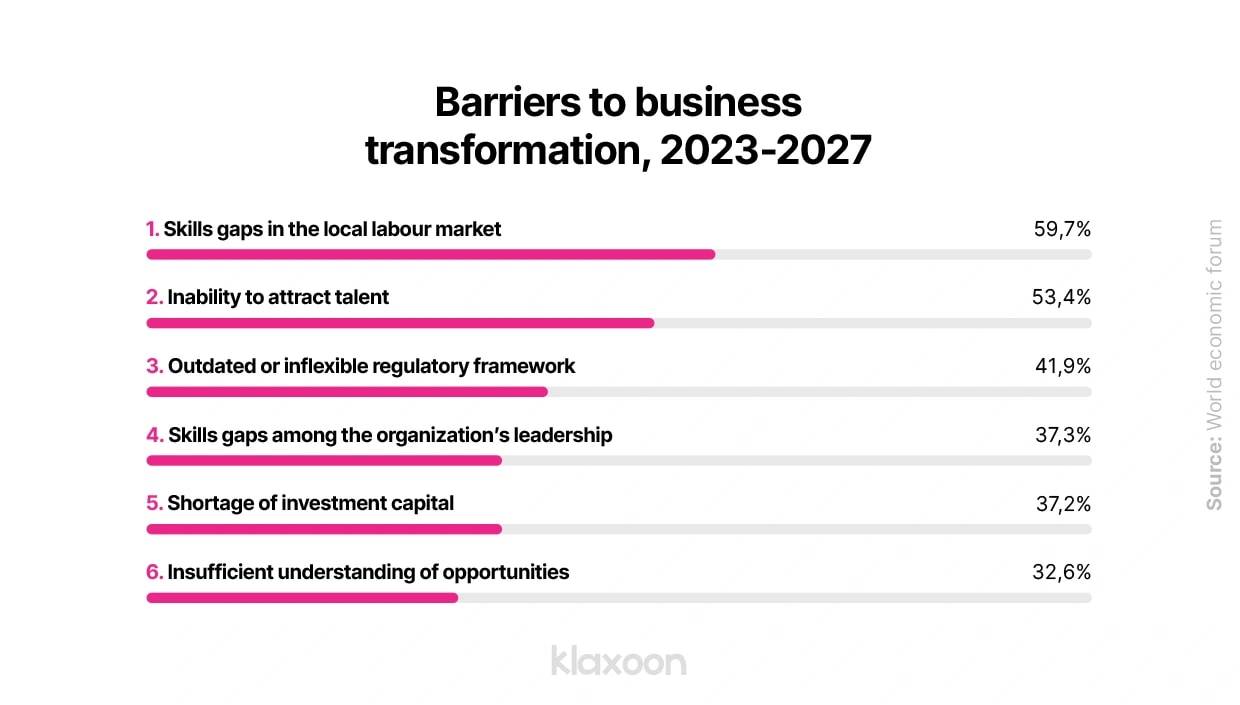

The second cause highlighted in this survey relates to organizational attractiveness, which is closely connected with employee retention.
While the "Great Resignation" phenomenon, which emerged during the Covid-19 pandemic, is slowing down, overall turnover is still high compared to pre-Covid-19 levels. According to Awardco, it will average 47% in 2022, compared with 57% in 2020.
At the same time, organizations are also facing a generational shift in the job market. The Baby Boomer generation is nearing the end of its career, and new entrants to the workforce are not sufficiently numerous to compensate for future retirements in Western countries.
By 2030, according to Korn Ferry's study, the shortage of talent on the job market could generate a loss of earnings of $8,500 billion for companies! Of course, this figure varies according to job and sector of activity: those most affected are those in the knowledge economy, which includes highly qualified workers, particularly in the service and finance sectors.
Against this backdrop, companies are finding it harder to recruit and retain talent, which can be costly when it comes to replacing departures.
As we know today, it is more expensive for a company to recruit and train a new employee than to retain an existing one. From a financial point of view alone, the Society for Human Resource Management has estimated that, in the United States, the average cost of hiring a new employee (across all sectors) is around $4,700. As before, this figure needs to be qualified according to the nature of the recruitment: for example, disparities can be high between the case of a manager and that of an operational employee.
But to this average cost must be added the time and effort required internally:
In reality, the impact on the team begins even before the recruitment phase, when the position has not yet been filled and team members have to divide up the tasks to be carried out in the meantime. This can even extend to the first few months after recruitment, until the new employee is fully operational and covering recruitment and training costs. This threshold is estimated at 6 months on average, according to Harvard Business School.
A good talent retention rate is therefore necessary to reduce all these costs for the company, right from the recruitment phase. Added to this imperative is a shift in decision-making power in recruitment, which is now tilted more in favor of candidates.
Employees are now less attached to their company, and their expectations evolve between the time they are hired and their long-term evolution with an employer. For example, salary is a key element in attracting talent, but is not enough to retain them in an organization (according to an Adecco report).
The biggest trend in recent years has been for employees to seek greater flexibility in their working conditions. According to data from the World Economic Forum, flexible working hours are now a priority for 83% of job-seekers! It's generally a way for them to gain greater autonomy and efficiency, as well as to better manage their working time according to their daily constraints.
Being able to work anytime and from anywhere on a regular basis is also the second reason cited by employees when it comes to leaving their employer. To ensure they retain their best talent, companies therefore need to invest in work tools that respect these flexibility requirements, and enable them to work just as efficiently wherever they are.


Whenever working from home or in the office, your teams need to be able to confidently switch between several environments without losing efficiency.
By 2022, a quarter of employees worldwide will have experienced at least some of the symptoms of burn-out (McKinsey).
Managers are the most exposed (44% according to Adecco), particularly as they take on more responsibilities following departures or redundancies. It is therefore more important than ever to take into account the work-life balance of your employees, whoever they may be, to keep them in your organization.
When one or more employees are affected by burn-out, the whole team is impacted. The other members of the team have to make extra efforts, as they would in the case of a replacement following a departure: taking on the tasks of the absent employee(s), training on subjects left unresolved, etc.).
More recently, it has even been shown that burnout can develop as a chain effect across an entire team (An Emergence Model of Team Burnout, 2021). This correlation shows the importance of taking action not only at the level of individual employees, but also across the entire team, to facilitate alignment and balance workloads.
To help you set up working conditions in line with these different employee expectations, all-in-one collaborative platforms like Klaxoon's enable you to gather feedback on a daily basis to anticipate a situation of overloaded teams, without needing to wait for the general satisfaction survey. The platform also offers a wide range of tools, methods and levers to help your teams speak out, and give your managers the means to support them.
Today, according to LinkedIn, 94% of employees are more inclined to stay longer with an employer if it invests in their career and skills development.
So it's time for you to develop your own talent pool within your company. Not only will this ensure their development and loyalty, it will also help to overcome the skills shortage in the marketplace.
In fact, according to Adecco, 10% more employees than in 2022 are now looking for opportunities to progress internally: job evolution, training, mentoring, etc. Yet fewer than 20% of managers believe that their organizations have mature strategies in place to foster the development, recruitment and retention of their talent. But more on that later.
Whether it's hybrid working, a better life balance or internal development opportunities, all these expectations have one thing in common: they put people at the heart of the talent retention stakes.
To maximize employee loyalty, and even turn it into a competitive recruitment advantage, companies must therefore use digitalization and the power of technology to enhance the human aspect of their collaboration, and unleash their collective intelligence.
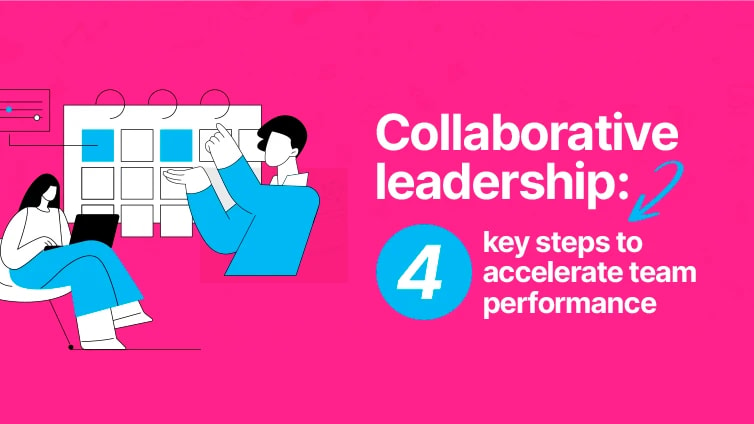

According to a ManpowerGroup study, 83% of workers believe that the ability to collaborate well is as important in their work as being productive. What's more, it's the soft skills specific to collaboration that are the most sought-after by companies today: empathy, creativity, the ability to work in a team, etc. This underlines the importance of collaboration in the development and retention of your talent, and confirms that automation is not about to overtake the human.
Unleashing the full collaborative potential of your teams within your organization is therefore a necessary step. It's the key not only to empowering them, but also to giving them every opportunity to express themselves and share their ideas.
To achieve this, you need to build an innovative work environment, adapted to all styles of collaboration and resilient in the face of change. This space must also be a lever for boosting employee engagement, in a context where almost 1 in 5 employees feel disengaged from their company.
The Klaxoon platform enables you to achieve each of these objectives. It enables you to increase your efficiency and commitment tenfold, whatever your way of working. Synchronous or asynchronous, one-on-one or in teams, it offers a complete collaborative experience with complementary visual tools, as well as advanced integrations with your existing application portfolio (Google, Microsoft,...).
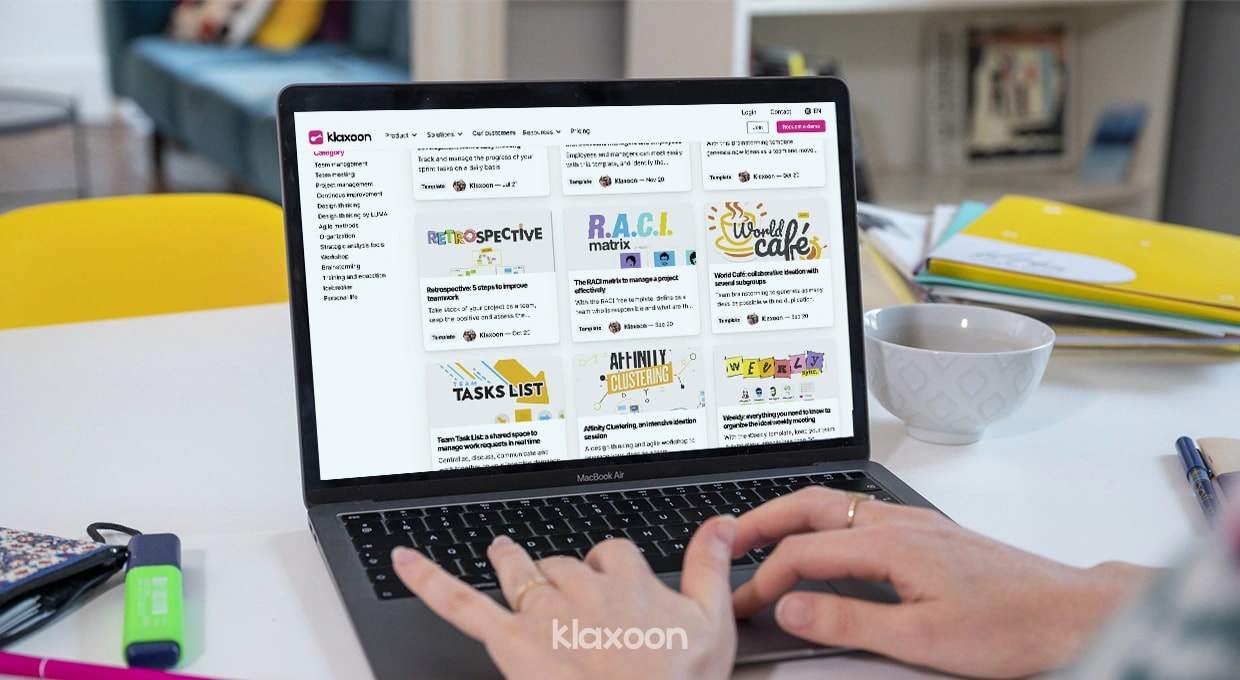

Klaxoon’s template library contains more than 200 ready-to-use models to help you unleash collective intelligence.
The feeling of belonging to an organization is a fundamental human aspect, the basis of good employee retention, but also of better productivity. According to Deloitte, it is a factor capable of improving work performance by 56%, and of dividing the risk of employee departure by 2!
To develop a strong sense of belonging in your teams and improve their collaborative experience, you need to create an organizational culture that invites them to be authentic and share their ideas transparently. Here again, the Klaxoon platform can help you let everyone express themselves in the way that suits them best, and exchange ideas in complete confidence thanks to recognized, ready-to-use collaboration methods: annual interview, SMART objectives, GROW model, etc.
As we saw earlier, developing your own pool of talent is essential to ensuring their loyalty. What's more, it's a necessity in the current context: by 2025, half the world's employees will need to at least partially upgrade their skills to adapt to new developments in the workplace (ManpowerGroup).
To achieve this, you can implement various types of in-house training and development initiatives:
In addition, on-the-job training is the primary method used by companies to support skills development: knowledge transfer, workshops, asynchronous learning, etc. According to the Financial Times, 70% of workers make use of this method, and the OECD acknowledges that 1 hour of informal training costs $15.50 and generates an annual ROI of $55 for the company.
To facilitate access to these less costly in-house training moments and make them more effective for everyone, Klaxoon offers ready-to-use activities and methodologies for sharing learning content, centralizing team knowledge, and creating dynamic learning situations:
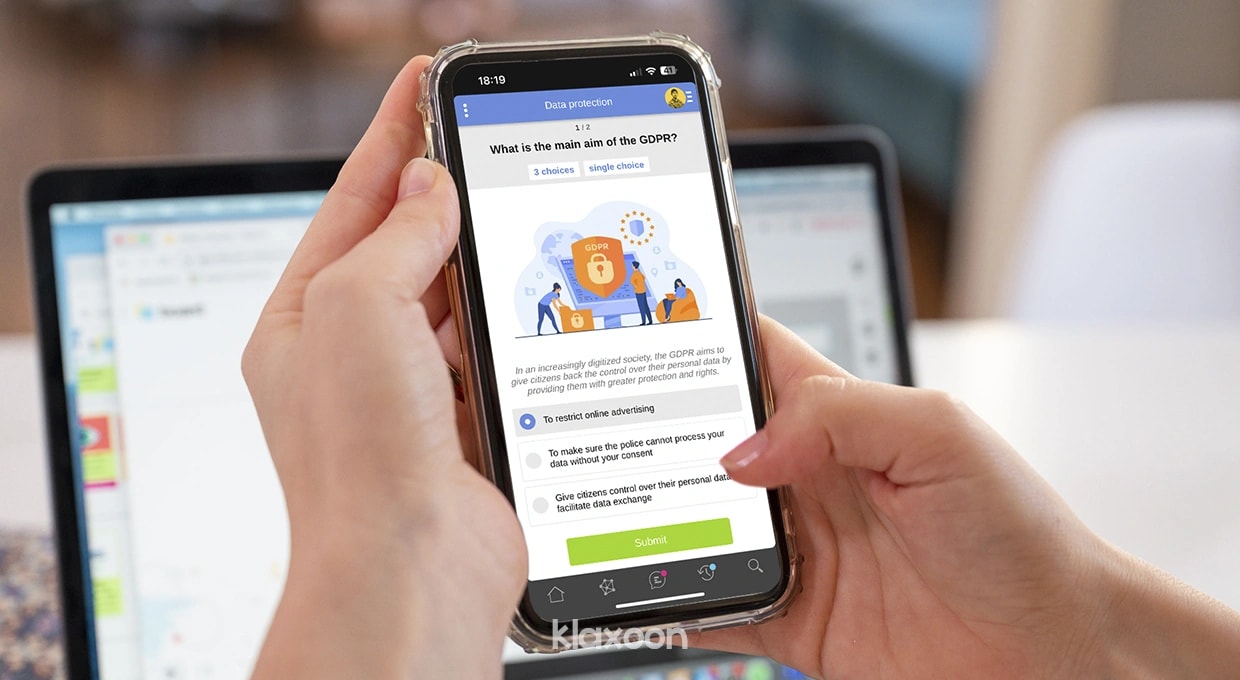

A Quiz is the perfect way to test your team’s knowledge and accelerate information retention thanks to interactive and visual features.
In 2018, according to Udemy, 1 in 2 employees quit their jobs because of management-related issues! The relationship between employees and their managers, and in particular their middle manager (direct manager within the team) is fundamental to their satisfaction in their interpersonal relationships at work, but also directly impacts the success of their missions.
What's more, middle managers are the primary implementers of strategies to strengthen talent retention within the company. They need to develop skills such as empathy and emotional intelligence, which are essential to building team loyalty.
According to McKinsey, middle managers play a performance-accelerating role in organizations by enhancing the expertise and well-being of their teams, which contributes to better talent retention. However, they face major challenges, including bureaucracy and process complexity, cited by almost 1 in 2 managers. These obstacles reduce their availability to develop talent and improve the employee experience within their teams.
Klaxoon responds to this need with an all-in-one solution to help your middle managers thrive in your company, simplify their work practices and support employees. Among the templates available on the platform, many are adapted to team management situations (individual interviews, performance appraisals, annual reviews, etc.). In addition, evaluation and feedback-sharing tools provide a quick and accurate overview of each employee's commitment.
According to Gallup (Creating an Exceptional Onboarding Journey for New Employees), employees who are offered optimal onboarding when they join a company are 2.6 times more likely to be satisfied with their job, and ultimately to stay. There's a reason why this crucial stage in the recruitment process accounts for 10% of companies' annual training budgets. Right from the recruitment stage, you need to put in place the levers to encourage the long-term retention of your talent.
Yet the same Gallup study shows that only 12% of employees agree that their employer offers an exceptional onboarding experience.
Klaxoon plays an essential role in optimizing the onboarding process for new employees. Thanks to the Onboarding Path template, suitable for both face-to-face and hybrid onboarding, you bring together in a single space all the relevant information to share with a newcomer, while gathering feedback and offering personalized challenges to encourage interaction with future key contacts.
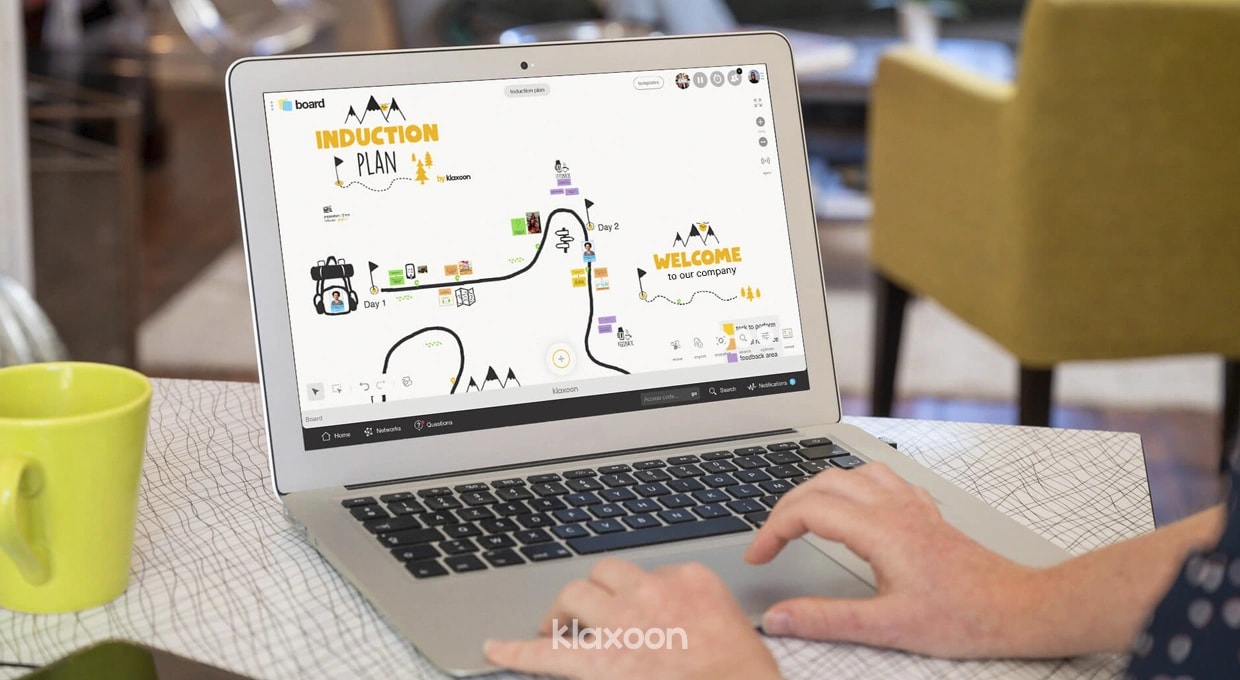

Every step of the onboarding process and all the relevant information are shared in a visual and engaging way with the new employee.
Finally, more than 3 out of 4 employees believe that their employer should have values geared towards sustainability, diversity and transparency (Randstad).
Being in tune with the values held dear by your employees is therefore another essential aspect of maximizing talent retention in your company (and also strongly linked to creating a sense of belonging). This is particularly true with the younger generation, who are looking for a job that makes sense to them, and reflects their authentic values.
To reinforce communication around your key values, but also to gather feedback from your employees on alignment with their own values, you can, for example, share a Klaxoon Survey with them on a regular basis. Simply create a suitable Survey template in a few clicks, then duplicate it as many times as you like, for example to share it with different groups or at different times. At the end of each Survey, you'll find consolidated results ready for analysis.
Unlock your teamwork potential